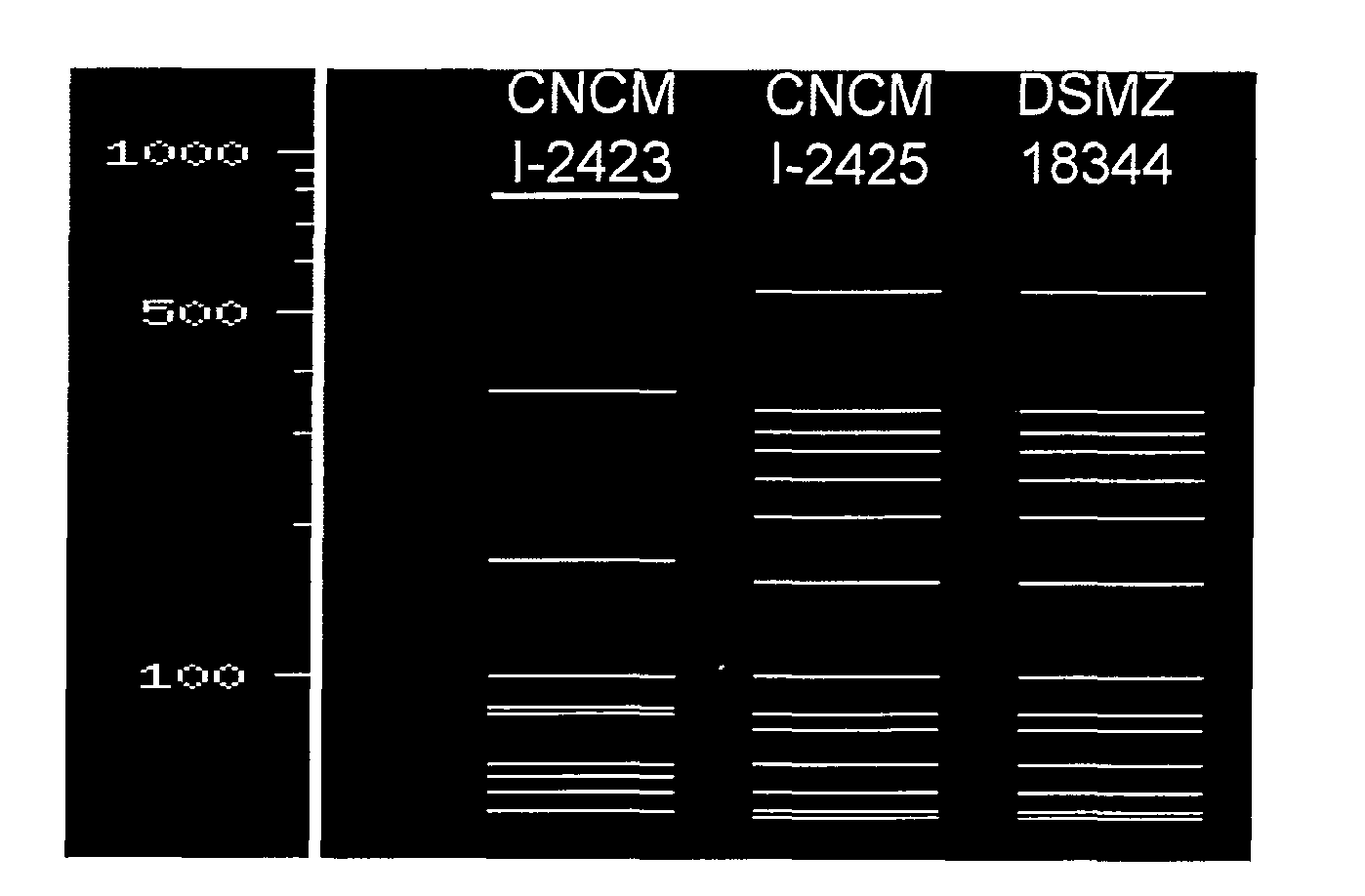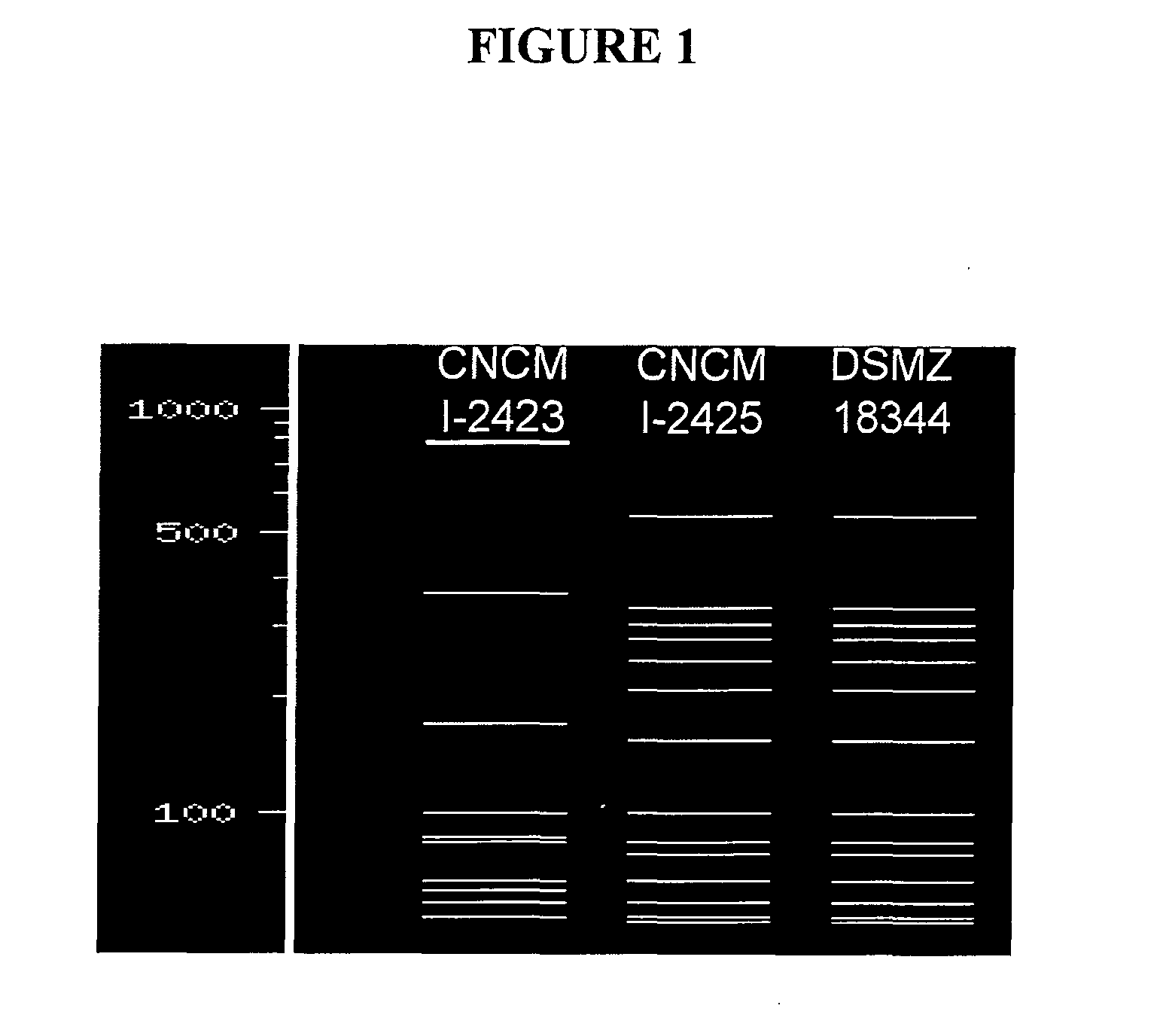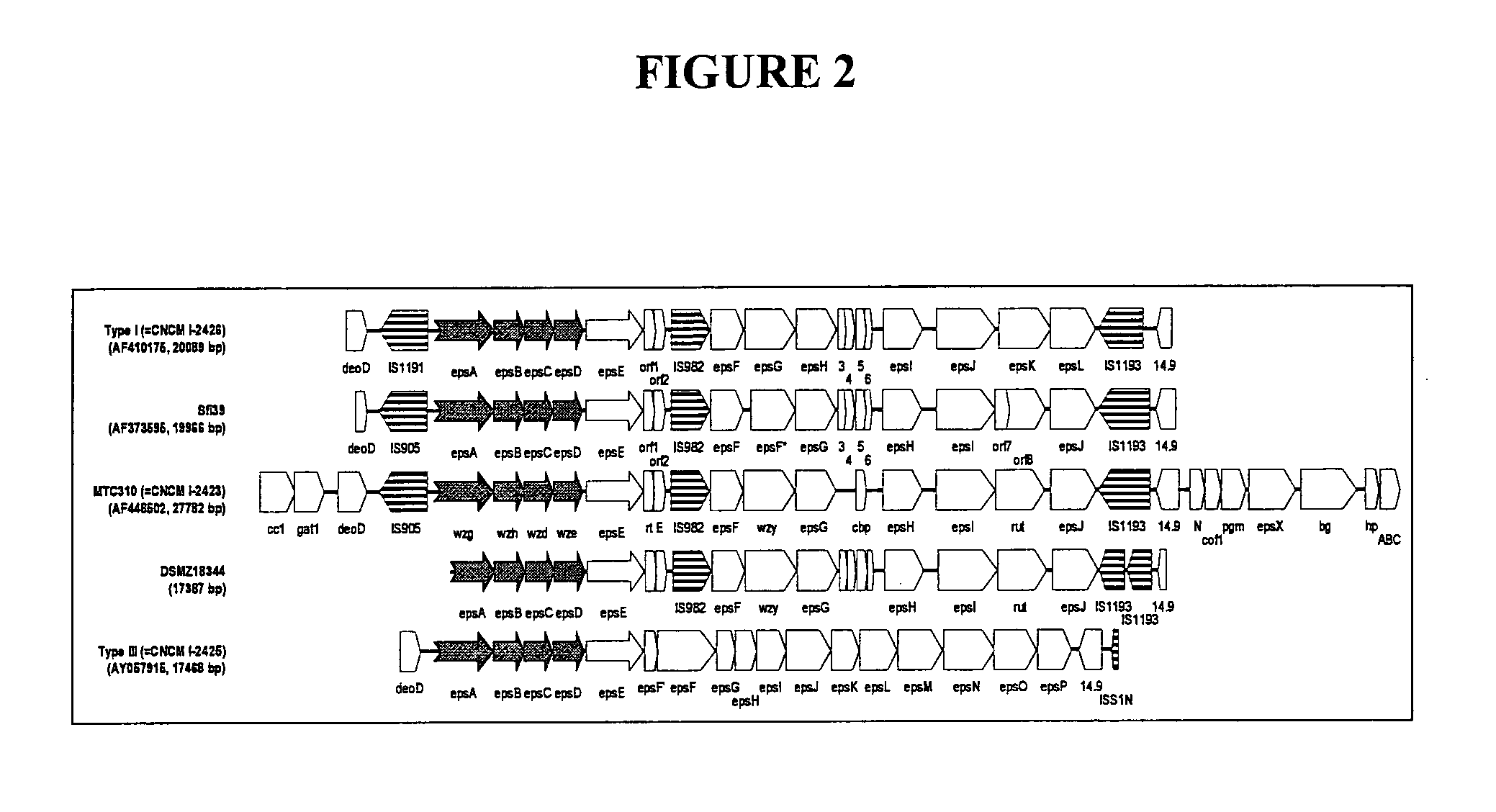Bacterium
a technology of lactic acid and bacteria, applied in the field of bacteria, can solve the problems of occupying a large space and equipment, phage contamination, and high risk of spoilage bacteria and/or phages, and achieve the effect of resisting stirring
- Summary
- Abstract
- Description
- Claims
- Application Information
AI Technical Summary
Benefits of technology
Problems solved by technology
Method used
Image
Examples
example 5
S. thermophilus DSMZ-18344 is Phage Resistant
[0254]Over the last 2 decades a library of more than one thousand phages virulent for industrial S. thermophilus strains have been collated. This collection of phages was intensively studied and their host spectrum was established. This allowed the identification of a set of 60 phages representative of all the host spectrums identified within the collection of phages.
[0255]Each of these representative phages was tested on strains DSMZ18344, CNCM I-2423 and CNCM I-2425, as described herein.
[0256]CNCM I-2423 was found to be sensitive to phage D4126 and D3215. Strain CNCMI-2425 was found to be sensitive to phage D4369. On the contrary strain DSMZ-18344 was resistant to all the representative phages tested.
TABLE 1StrainViscosityCasson yield stressThixotropy areaname(Pa · s)(Pa)(Pa / s)DSMZ-18344686.48627CNCM I-24252814.4321780CNCM I-2423499.281035
[0257]Sammlung von Mikroorganismen und Zellkulturen GmbH, Mascheroder Weg 1 b, D-38124 Braunschweig...
example 1
Streptococcus thermophilus DSMZ-18344 is a Fast Acidifier of Milk
[0259]The speed of acidification of milk during the fermentation process is −0.0153 upH / min, compared to 0.0129 upH / min, 0.0167 upH / min and 0.0209 upH / min for Streptococcus thermophilus CNCM I-2423, Streptococcus thermophilus CNCM I-2980 and Streptococcus thermophilus CNCM I-2425, respectively.
example 2
Streptococcus thermophilus DSMZ-18344 Generates Fermented Milk with a Superior Viscosity
[0260]Fresh fermented milks are produced at lab scale. The milk base is composed of commercial UHT milk supplemented with 3% (w / w) semi-skimmed milk powder. After mixing, the milk base is heated during 10 min+ / −1 min at 90° C.+ / −0.2° C. The base is then cooled down at 43° C.+ / −1° C. in a water bath regulated at 43° C.+ / −1° C. and the milk is dispatched into 125 ml glass beakers.
[0261]The milk is inoculated with the bacterium at a ratio of 1E6-1E7 cfu / ml. The fermentation is carried out at 43° C.+ / −1° C. with out stirring and it is stopped when the pH reaches 4.6+ / −0.05. At this moment, the fresh fermented milk is quickly cooled down at 6° C.+ / 1° C. in less than 1 hour. Finally, the products are stored at this temperature during 28 days.
[0262]Following this production of fermented milk either viscosimetry is measured using a Brookfield viscosimeter.
[0263]The viscosity in fermented milk is 68 Pa·s ...
PUM
| Property | Measurement | Unit |
|---|---|---|
| viscosity | aaaaa | aaaaa |
| pH | aaaaa | aaaaa |
| viscosity | aaaaa | aaaaa |
Abstract
Description
Claims
Application Information
 Login to View More
Login to View More - R&D
- Intellectual Property
- Life Sciences
- Materials
- Tech Scout
- Unparalleled Data Quality
- Higher Quality Content
- 60% Fewer Hallucinations
Browse by: Latest US Patents, China's latest patents, Technical Efficacy Thesaurus, Application Domain, Technology Topic, Popular Technical Reports.
© 2025 PatSnap. All rights reserved.Legal|Privacy policy|Modern Slavery Act Transparency Statement|Sitemap|About US| Contact US: help@patsnap.com



